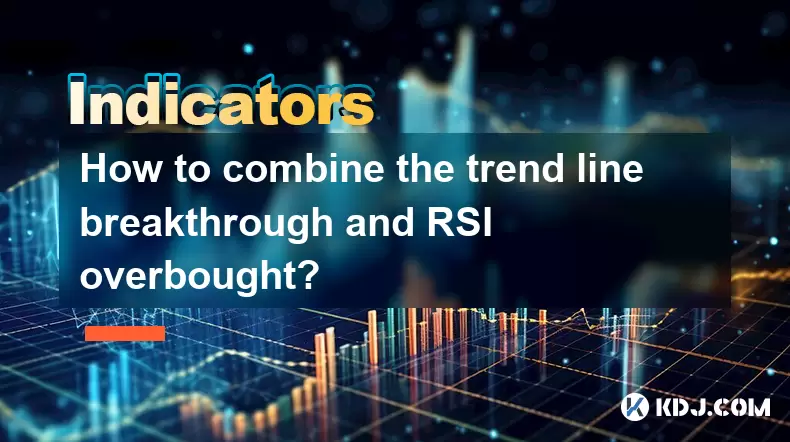-
 Bitcoin
Bitcoin $119000
-2.21% -
 Ethereum
Ethereum $4315
1.01% -
 XRP
XRP $3.151
-3.11% -
 Tether USDt
Tether USDt $0.0000
0.00% -
 BNB
BNB $808.5
-0.71% -
 Solana
Solana $175.8
-4.21% -
 USDC
USDC $0.9999
0.00% -
 Dogecoin
Dogecoin $0.2250
-3.92% -
 TRON
TRON $0.3469
1.77% -
 Cardano
Cardano $0.7818
-3.81% -
 Chainlink
Chainlink $21.47
-2.10% -
 Hyperliquid
Hyperliquid $43.30
-6.81% -
 Stellar
Stellar $0.4370
-2.84% -
 Sui
Sui $3.682
-4.40% -
 Bitcoin Cash
Bitcoin Cash $590.8
2.67% -
 Hedera
Hedera $0.2484
-5.20% -
 Ethena USDe
Ethena USDe $1.001
0.00% -
 Avalanche
Avalanche $23.10
-4.29% -
 Litecoin
Litecoin $119.2
-3.96% -
 Toncoin
Toncoin $3.409
0.90% -
 UNUS SED LEO
UNUS SED LEO $9.016
-1.29% -
 Shiba Inu
Shiba Inu $0.00001304
-3.82% -
 Uniswap
Uniswap $11.18
1.33% -
 Polkadot
Polkadot $3.913
-3.51% -
 Cronos
Cronos $0.1672
-3.08% -
 Dai
Dai $1.000
0.02% -
 Ethena
Ethena $0.7899
-4.70% -
 Bitget Token
Bitget Token $4.400
-1.23% -
 Pepe
Pepe $0.00001132
-5.93% -
 Monero
Monero $257.9
-6.44%
How to combine the trend line breakthrough and RSI overbought?
Combining trend line breakthroughs with RSI overbought signals can help crypto traders optimize entry and exit points, enhancing trade decisions.
Jun 08, 2025 at 04:35 pm

How to Combine the Trend Line Breakthrough and RSI Overbought?
Combining the trend line breakthrough and RSI overbought signals can be a powerful strategy for cryptocurrency traders looking to optimize their entry and exit points. This article will delve into the intricacies of both indicators, how to effectively combine them, and how to apply this strategy to your trading routine.
Understanding Trend Line Breakthroughs
A trend line is a straight line that connects two or more price points and extends into the future to act as a line of support or resistance. In the context of cryptocurrency trading, a breakthrough or breakout occurs when the price of an asset moves through this trend line, indicating a potential shift in market sentiment.
- To draw a trend line, identify at least two major highs or lows on a chart. Connect these points with a straight line.
- For an uptrend, connect the lows. A breakthrough below this line may signal a potential downtrend.
- For a downtrend, connect the highs. A breakthrough above this line may signal a potential uptrend.
Recognizing these breakthroughs is crucial because they often precede significant price movements. Traders should monitor these lines closely to anticipate potential changes in market direction.
Understanding RSI and Overbought Conditions
The Relative Strength Index (RSI) is a momentum oscillator that measures the speed and change of price movements. It ranges from 0 to 100 and is typically used to identify overbought or oversold conditions in the market.
- An RSI value above 70 is generally considered overbought, suggesting that the asset may be due for a price correction.
- An RSI value below 30 is generally considered oversold, suggesting that the asset may be due for a price rebound.
The RSI can be a valuable tool for traders as it provides insights into the momentum behind price movements, helping to confirm trend line breakthroughs.
Combining Trend Line Breakthroughs with RSI Overbought Signals
To effectively combine trend line breakthroughs with RSI overbought signals, traders should look for instances where both indicators align to confirm a potential trade setup.
- Identify a trend line on your chart, either an uptrend or downtrend.
- Monitor the RSI and wait for it to enter the overbought zone (above 70).
- Look for a breakthrough of the trend line that coincides with the RSI being in the overbought zone.
When these two conditions are met, it can be a strong signal that a reversal or significant price correction is imminent. This combination can help traders make more informed decisions about when to enter or exit a trade.
Applying the Strategy in Cryptocurrency Trading
Let's explore how to apply this strategy in the context of cryptocurrency trading. Suppose you are monitoring Bitcoin (BTC) on a daily chart.
- Draw a trend line connecting the recent lows to identify an uptrend.
- Monitor the RSI on the same chart. If the RSI moves above 70, Bitcoin may be entering an overbought state.
- Watch for a breakthrough below the trend line. If this occurs while the RSI is still overbought, it could signal a potential price correction.
Here’s a step-by-step guide on how to execute this strategy:
- Open your trading platform and select the Bitcoin chart with the desired timeframe (e.g., daily).
- Use the drawing tools to plot a trend line connecting the recent lows.
- Add the RSI indicator to the chart and set it to a 14-period setting, which is standard.
- Monitor the RSI and wait for it to move above 70.
- Keep an eye on the price action and wait for a clear breakthrough below the trend line.
- Once both conditions are met, consider entering a short position or exiting a long position.
Practical Example of the Strategy
To illustrate this strategy, let's look at a hypothetical scenario involving Ethereum (ETH).
- You observe an uptrend in ETH's price, drawing a trend line connecting the recent lows.
- The RSI for ETH moves above 70, indicating an overbought condition.
- Suddenly, ETH's price breaks below the trend line while the RSI remains overbought.
In this scenario, the combination of the trend line breakthrough and the overbought RSI would suggest a potential price correction. A trader might consider entering a short position or exiting any existing long positions in anticipation of a downward move.
Adjusting the Strategy for Different Market Conditions
While the strategy described above is effective, it's important to adjust it according to different market conditions and asset behaviors.
- In volatile markets, you may need to use shorter timeframes (e.g., 4-hour or 1-hour charts) to capture more frequent trend line breakthroughs and RSI signals.
- In less volatile markets, longer timeframes (e.g., weekly charts) might be more suitable to identify significant trends and overbought conditions.
- Consider using other technical indicators like moving averages or volume to confirm the signals provided by the trend line and RSI.
By tailoring the strategy to the specific characteristics of the cryptocurrency you are trading, you can enhance its effectiveness and increase your chances of making profitable trades.
Frequently Asked Questions
1. Can this strategy be applied to all cryptocurrencies?
While the strategy can be applied to most cryptocurrencies, its effectiveness may vary depending on the liquidity and volatility of the specific asset. More liquid assets like Bitcoin and Ethereum tend to provide clearer signals and more reliable trend line breakthroughs.
2. How often should I monitor the RSI and trend lines?
The frequency of monitoring depends on your trading style and the timeframe you are using. For day traders, checking the indicators every few hours might be necessary, while swing traders might monitor them once or twice a day.
3. What other indicators can complement this strategy?
Additional indicators like the Moving Average Convergence Divergence (MACD) or Bollinger Bands can be used to confirm trend line breakthroughs and RSI signals. These indicators can provide further insights into momentum and volatility, enhancing the overall reliability of your trading signals.
4. Is it possible to automate this strategy using trading bots?
Yes, trading bots can be programmed to monitor trend lines and RSI values, executing trades when the specified conditions are met. However, it's crucial to backtest the strategy thoroughly and adjust the bot's parameters to account for market fluctuations and potential false signals.
Disclaimer:info@kdj.com
The information provided is not trading advice. kdj.com does not assume any responsibility for any investments made based on the information provided in this article. Cryptocurrencies are highly volatile and it is highly recommended that you invest with caution after thorough research!
If you believe that the content used on this website infringes your copyright, please contact us immediately (info@kdj.com) and we will delete it promptly.
- Arc Blockchain: Circle's Layer-1 Play Amidst $428 Million Loss
- 2025-08-12 20:30:13
- XRP Price: Riding the Bull Cycle Wave or Hitting a Wall?
- 2025-08-12 20:50:12
- Cloud Mining in 2025: Chasing Passive Income and High Returns
- 2025-08-12 20:30:13
- Solana Price, Meme Coins, and 100x Gains: What's the Hype?
- 2025-08-12 20:50:12
- Japan, Bitcoin, and Treasuries: A New Era of Corporate Finance?
- 2025-08-12 18:30:12
- Bitcoin Bull Market: Decoding the Indicators for the Next Big Move
- 2025-08-12 18:30:12
Related knowledge

What does it mean when the +DI and -DI cross frequently in the DMI indicator but the ADX is flattening?
Aug 11,2025 at 03:15am
Understanding the DMI Indicator ComponentsThe Directional Movement Index (DMI) is a technical analysis tool composed of three lines: the +DI (Positive...

What does it mean when the moving average, MACD, and RSI all send buy signals simultaneously?
Aug 11,2025 at 01:42pm
Understanding the Convergence of Technical IndicatorsWhen the moving average, MACD, and RSI all generate buy signals at the same time, traders interpr...

What does it mean when the price is trading above the SAR indicator but the red dots are densely packed?
Aug 09,2025 at 11:49pm
Understanding the SAR Indicator and Its Visual SignalsThe SAR (Parabolic Stop and Reverse) indicator is a technical analysis tool used primarily to de...

What does it mean when the candlestick chart forms a "Morning Star" but trading volume is sluggish?
Aug 12,2025 at 06:28pm
Understanding the Morning Star Candlestick PatternThe Morning Star is a three-candle bullish reversal pattern commonly observed in cryptocurrency pric...

What does it mean when the RSI indicator moves sideways for an extended period between 40 and 60?
Aug 10,2025 at 08:08am
Understanding the RSI Indicator in Cryptocurrency TradingThe Relative Strength Index (RSI) is a momentum oscillator widely used in cryptocurrency trad...

What does it mean when the MACD histogram continues to shorten but the price reaches a new high?
Aug 09,2025 at 09:29pm
Understanding the MACD Histogram and Its ComponentsThe MACD (Moving Average Convergence Divergence) indicator is a widely used technical analysis tool...

What does it mean when the +DI and -DI cross frequently in the DMI indicator but the ADX is flattening?
Aug 11,2025 at 03:15am
Understanding the DMI Indicator ComponentsThe Directional Movement Index (DMI) is a technical analysis tool composed of three lines: the +DI (Positive...

What does it mean when the moving average, MACD, and RSI all send buy signals simultaneously?
Aug 11,2025 at 01:42pm
Understanding the Convergence of Technical IndicatorsWhen the moving average, MACD, and RSI all generate buy signals at the same time, traders interpr...

What does it mean when the price is trading above the SAR indicator but the red dots are densely packed?
Aug 09,2025 at 11:49pm
Understanding the SAR Indicator and Its Visual SignalsThe SAR (Parabolic Stop and Reverse) indicator is a technical analysis tool used primarily to de...

What does it mean when the candlestick chart forms a "Morning Star" but trading volume is sluggish?
Aug 12,2025 at 06:28pm
Understanding the Morning Star Candlestick PatternThe Morning Star is a three-candle bullish reversal pattern commonly observed in cryptocurrency pric...

What does it mean when the RSI indicator moves sideways for an extended period between 40 and 60?
Aug 10,2025 at 08:08am
Understanding the RSI Indicator in Cryptocurrency TradingThe Relative Strength Index (RSI) is a momentum oscillator widely used in cryptocurrency trad...

What does it mean when the MACD histogram continues to shorten but the price reaches a new high?
Aug 09,2025 at 09:29pm
Understanding the MACD Histogram and Its ComponentsThe MACD (Moving Average Convergence Divergence) indicator is a widely used technical analysis tool...
See all articles

























































































